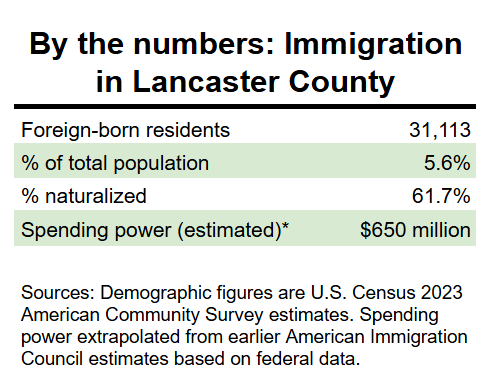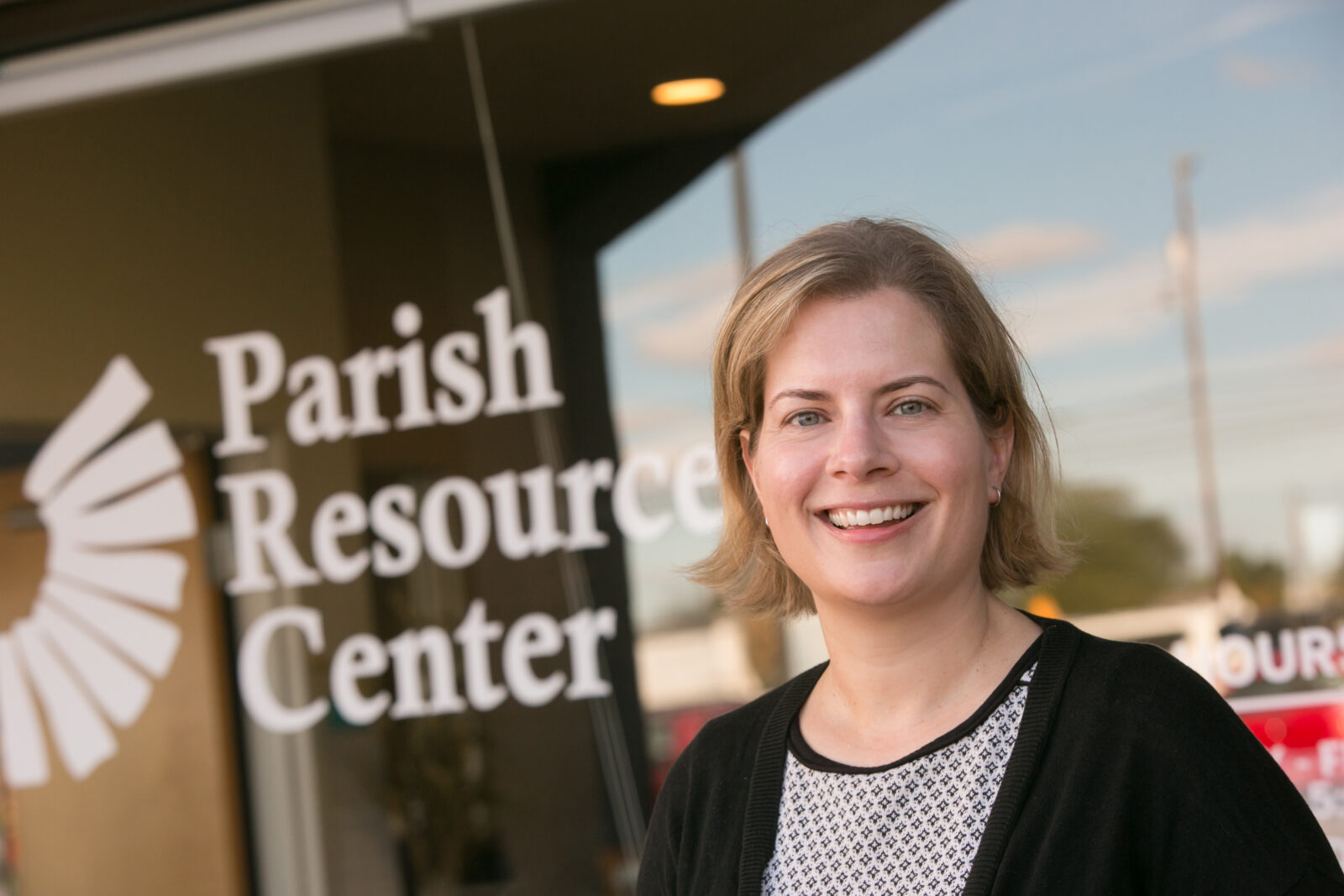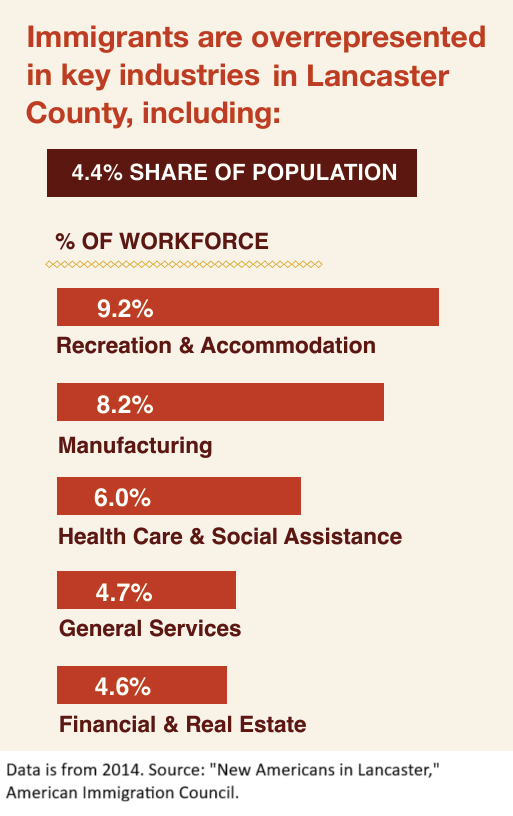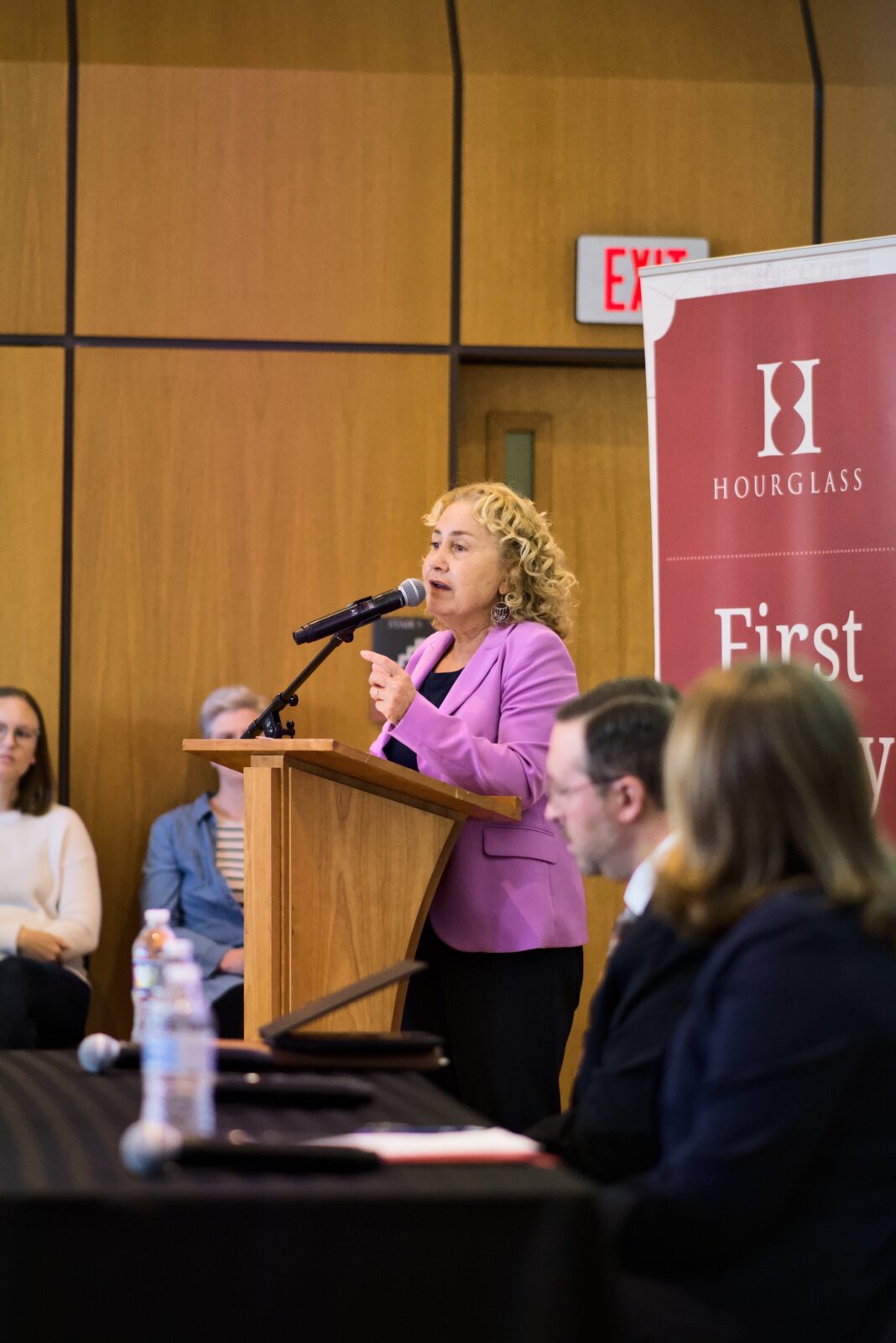How Immigration Policy Impacts Lancaster County
By Tim Stuhldreher in partnership with The Lancaster County Community Foundation
October 27, 2025
Our unique role as a community foundation allows us to hear directly from organizations on the front lines to learn first hand how federal actions are impacting us here in Lancaster County. To help connect our shared community with accurate information, we reached out to a variety of organizations to understand how new and changing immigration policy is impacting our local economy, our sense of community, and our safety.
In 2021, Hasan Qurbani arrived in Lancaster, a few months after the takeover of his home country, Afghanistan, by the Taliban.

Hasan Qurbani (Source: Provided)
Today, he works as a data analytics specialist for a marketing firm. In his spare time, he volunteers as a youth soccer coach. He recently bought a house.
Sujata Bastola arrived in Lancaster as a young teen with her parents from Nepal in 2011. Having since graduated from McCaskey High School and Indiana University of Pennsylvania, she works as a home health aide. She has launched a fashion business and is concentrating on expanding it.
Lancaster County is home to thousands of immigrants and refugees like Bastola and Qurbani. Displaced by instability, strife or persecution, they relish the opportunities afforded by a new start in America.
Arriving here after years in a refugee camp, “it was like heaven for us,” Bastola said.

Sujata Bastola (Source: Provided)
She and Qurbani expressed hope that Lancaster County will continue to stand with immigrants and refugees as they stand up for their rights, and continue to recognize the value of being a welcoming community.
Welcoming from the start
Lancaster County’s tradition of hospitality to immigrants and persecuted groups stretches back more than three centuries, to the earliest days of European settlement here.
“We have been welcoming the persecuted, the forgotten and the most vulnerable since before America existed,” Valentina Ross, director of Church World Service Lancaster, wrote in an LNP op-ed last month. The nonprofit is the area’s largest resettlement and immigrant services agency.
As of 2023, the county was home to a little over 31,000 foreign-born residents, according to U.S. Census estimates. That amounts to 5.6% of the total population. The majority, 62%, are naturalized citizens. (In Pennsylvania as a whole, 7.4% of the population is foreign-born, of whom 55.5% are naturalized.)

Immigration is a politically charged issue, and federal policy has shifted sharply since the change in administration in January. The executive branch has suspended refugee resettlement and revoked legal immigration status for hundreds of thousands of foreign-born individuals. Immigration enforcement has ramped up, with the stated goal of making 3,000 arrests a day and deporting 1 million immigrants a year.
ICE — U.S. Immigration & Customs Enforcement — has embarked on an aggressive recruiting push to add 10,000 new agents to the 20,000 already on payroll. The One Big Beautiful Bill massively increases ICE’s funding, allocating it $75 billion over four years as part of $170 billion devoted to immigration enforcement overall. (ICE’s 2024-25 budget was $10.4 billion.)
The changes have reverberated through immigrant communities here and nationwide. They are seeing arrangements and guarantees they thought were durable being redefined or annulled.
“(M)any of our clients are confused and scared, regardless of their visa status,” Ross said. While CWS is working to reassure them and educate them on their legal rights, “there is a sense of fear in the immigrant communities that each of us may be next.”
As part of the shift, the government abruptly cancelled grants totaling millions of dollars to resettlement agencies, including CWS. (The agencies are challenging the administration’s actions in court.)
The loss of funding forced CWS Lancaster to furlough about half its staff, though some have since been hired back. The organization has had to double down on seeking private philanthropy to maintain operations.
“The Lancaster community has been fantastic in responding to our requests for support,” Ross said.

Kate Good, Executive Director of PRC (Source: Provided)
Eligibility revoked
Immigration law is immensely complicated, and individuals can be admitted under many legally distinct designations. Among them are “humanitarian parole,” provided for “urgent humanitarian reasons or public benefit”; and Temporary Protected Status, TPS, granted to individuals facing unsafe conditions in their home countries, such as conflict or natural disasters.
This year, TPS and parole have been revoked or ended for nationals of nine countries. Some of the orders are taking effect, others remain tied up in court. TPS is scheduled to expire for more countries in coming months.
The change affects eligibility to work; and makes individuals with no other legal basis for residency subject to deportation.
Hundreds of those affected live in Lancaster County. Many are turning to a free legal clinic run by the Parish Resource Center (PRC). Individuals and families meet with an attorney or an accredited immigration advisor, then prepare asylum applications or other case documentation with help from volunteers. The clinic has assisted some 300 people since March, PRC Executive Director Kate Good said.
These are people “who made every effort to do things correctly,” Good said. They entered the country legally and were complying fully with their conditions of residence.
Meanwhile, ICE has been making arrests and signing up local law enforcement for training. ICE has been targeting courthouses and immigration check-ins, arguing that it is safer and conserves resources.
Since July, CWS Lancaster has fielded roughly 30 calls from families whose loved ones were detained by the agency, Ross said.
Nationally, ICE has come under criticism for heavy-handed tactics and alleged abuses of due process and civil rights. Immigration agents have detained at least 170 American citizens, according to Pro Publica, in a report that also documents many reports of bystanders and peaceful protesters being threatened, beaten and tased. Recent stories are raising questions about ICE’s recruiting and vetting standards.
This spring, ICE arrested and deported a dozen Nepali-speaking Bhutanese men from central Pennsylvania. They were here legally, but had criminal records, which were treated as grounds for expulsion even though some of the crimes were relatively minor, such as public drunkenness. Advocates say the men were not afforded due process to challenge their removal.
Their deportation means they are effectively stateless: Bhutan expelled its Nepali minority in 1990 and does not recognize it. Some of the men have had to go into hiding; their families don’t know where they are or if they will see them again.
The situation has shattered her community’s sense of safety, Bastola said, and sharply divided it: “People are very scared.” They are carrying their documentation with them constantly. Children whose parents whose English is limited worry about them leaving the house.
Qurbani, meanwhile, has been set back with regard to a uniquely personal objective: Being reunited with his wife.
The couple has been apart since he left Afghanistan. For three years he has worked through the Office of the Coordinator for Afghan Relocation Efforts, or CARE, to secure a visa for her. Last year, she was told to prepare for an interview, one of the last steps in the vetting process. In January, however, an executive order suspended all refugee admissions, including family reunification cases.

The Qurbanis (Source:Provided)
Returning to Afghanistan isn’t an option: Qurbani’s previous role there as a university lecturer and his work with the U.S. embassy would put him in danger of retribution.
“It’s really frustrating,” he said. He and his wife were married in 2017, which means they’ve now been apart as long as they were together.
The case for welcome
Immigration opponents make a range of claims about its purported negative effects. Immigrants, they say, take jobs from native-born workers and depress wages. They are a drain on taxpayer-funded social services and a strain on the housing market. They commit crimes. They change local character and culture in undesirable ways.
None of those claims holds up under scrutiny, advocates say.
Economic impact
In Lancaster County, foreign-born workers contributed $1.3 billion to Lancaster County GDP in 2014, according to a study by the American Immigration Council. Adjusted for population and economic growth, that figure would exceed $2 billion today.
Adding tens of millions of dollars more are the roughly 500 or so foreign students enrolled at the county’s institutes of higher education. The county’s immigrants pay around $200 million a year in federal, state and local taxes and enjoy more than $500 million in spending power.
Foreign-born workers play an outsized role in several sectors of the Lancaster County economy, the AIC’s report found, accounting for 9.2% of the workforce in tourism & hospitality, 8.2% in manufacturing and 6% in healthcare. Compared with the native-born population, a higher proportion of foreign-born residents have a bachelor’s degree or higher.

Business leaders say diversity fosters innovation and better decision-making. Plus, cultural diversity makes for interesting communities: You can see arts and crafts you haven’t seen before, or learn a traditional dance, or discover a new style of music.
One highly visible sign of immigrants’ cultural contributions in Lancaster is its vibrant food scene, the envy of communities that are far larger. Immigrants and refugees have made the Red Rose City “a hive of culinary diversity,” the New York Times wrote in 2019. It noted that aloo bodi tama, a Nepalese dish, “is just as easy to find as a molasses-filled shoofly pie, a Pennsylvania Dutch classic.”
To understand the economic impact of immigrants, you have to recognize that it’s no different, in principle, from that of anyone else, writes economist Noah Smith. Any time you add people to an area’s workforce, that could depress wages if everything else stayed static. But it doesn’t: The new entrants use their income to buy goods and services, pushing demand, and wages for everyone else, back up. It’s a wash.
Economics research bears that out, Smith writes, citing no fewer than 17 studies. While there can be exceptions under certain circumstances, immigration on balance “has very little or no impact on native-born wages,” he concludes.
Nor do immigrants take jobs from others, Cathryn Miller-Watson, testified last year at a state House Democratic Policy Committee hearing. Miller-Watson is executive director of Hebrew Immigrant Aid Society Pennsylvania, or HIAS.
Again, this is borne out by research. One study looked at the H-2B visa lottery system, and found that American companies that didn’t get the visas did not employ Americans instead.
Nor are Americans filling jobs left open by stepped-up enforcement against undocumented farmworkers, the U.S. Labor Department said. As The Hill reported Oct. 14, the department recently said in a regulatory filing that the resulting lack of personnel is “threatening the stability of domestic food production and prices for U.S consumers.”
Enhancing the workforce
Without immigration, Lancaster County faces worrisome demographic trends, as do other Pennsylvania counties, said Kyle Kopko, executive director County Commissioners Association of Pennsylvania. The county’s population is aging and its birth rate is below replacement levels.
As of this summer, its workforce is down by 6,000 people compared with 2024, according to EDC Lancaster’s Center for Regional Analysis. The trend is likely driven by a mix of retirements, stricter immigration enforcement and economic uncertainty, the center said.
Kopko was speaking at a forum on immigration hosted by the Hourglass Foundation, part of its “First Friday” series. He was joined by Ross and by Kat DeSantis, the Lancaster Chamber’s public policy manager.
Since the pandemic, recruitment and retention has consistently been local employers’ top concern, DeSantis said. Companies are poised to expand but can’t find the staff they need to do so, she said.
Agriculture is especially dependent on foreign-born labor. As of 2017, there were 8,100 paid farmworkers in Lancaster County and 61,000 statewide, according to the U.S. Department of Agriculture. Roughly three-quarters of the state total are foreign-born. Close to two-thirds of those may be undocumented.

Farmland in Lancaster County (Source: Tim Stuhldreher)
Without foreign-born workers, “the ag industry in our nation and state would be in bad shape,” said Luke Brubaker, of Brubaker Farms in East Donegal Township. He supports expanding legal immigration for farmworkers. “That’s what we need,” he said, “That is one of the best things that we could do.”
That doesn’t extend to criminals or individuals looking for a handout instead of a job, he emphasized. There are other industries that can’t get enough workers; expanding legal immigration would help in those sectors, too, he said.
The chamber strongly supports an overhaul of the legal immigration system, DeSantis said, including an increase in visa caps, streamlining the application and approval process, and a clear pathway to citizenship or legal status for individuals who arrived as children. Appropriate reform, combined with border enforcement, “could effectively limit the need for mass deportations while simultaneously ensuring that the working-age labor needs are met,” the chamber says in a position paper released in January.
Many people don’t realize how hard it is to immigrate legally. As the position paper notes, the United States’ employment-based immigration quotas were set 35 years ago, in 1990, when the population and economy were far smaller and less globalized.
Moreover, dealing with the immigration bureaucracy is incredibly costly and time-consuming: “We talk regularly with businesses who face five to seven years to get one employee through a visa process,” DeSantis said.
Social services and housing
When they are starting out, new refugees and asylum recipients often take advantage of public benefits such as Medicare and SNAP (the Supplementary Food Assistance Program, or food stamps), along with federally funded resettlement assistance from agencies like CWS. In the long run, however, those costs are more than offset, researchers have found.
One federal study, looking at the period from 1990 to 2022, found that refugees and asylees contributed $123.8 million more in federal, state and local taxes than they cost. A 2016 National Academies of Science report concluded that immigration is a net positive for federal revenues and that it fosters innovation, entrepreneurial activity and long-run economic growth. While it did find a net cost to state and local governments from immigration, that was mainly because immigrants’ children attend public school, a factor that applies equally to the majority of native-born families.

Valentina Ross, Director CWS Lancaster (Source: Caleb Bornman)
“If we look at the overall value for communities, the return on investment that we get by offering benefits to refugees for a few months upon arrival seems pretty high,” Ross said.
Starting in November, refugees will no longer be eligible for SNAP, a policy change made in the One Big Beautiful Bill. (This is unrelated to the interruption in SNAP due to the government shutdown.) In response, CWS Lancaster is opening a food bank. It anticipates initially serving around 100 people a week.
Down the road, the One Big Beautiful Bill will exclude refugees from enrolling in Medicaid, the government’s health insurance program for low-income households, and from eligibility for assistance in paying premiums under the Affordable Care Act.
Refugees have been eligible for Medicare for half a century, Ross said, and it has served as a “lifeline” for those who need care. But now they’ll be barred from using it, even as they continue to pay into it through payroll taxes.
As for housing, it’s certainly the case that immigrants are entering a tight market here. But high housing costs are a nationwide problem, Ross noted, and they’re rising as much or more in areas with little or no immigration. The problem, analysts say, isn’t too much demand, but lagging supply. Between increased supply costs and a web of exclusionary zoning regulations at the municipal level, it has become broadly difficult or impossible to build housing at a reasonable price.
What about crime? No demographic as large as the immigrant community can be expected to be entirely crime-free. There are legitimate concerns around international drug smuggling and human trafficking. And while being in the U.S. without valid documentation is normally a civil matter, not a criminal one, unauthorized entry is a crime.
With all that said, the notion that immigrants bring increased crime is “perhaps the biggest myth there is,” HIAS’ Miller-Watson said. In reality, legal immigrants are 74% less likely to be incarcerated than native-born Americans, according to an analysis by the right-leaning Cato Institute. Undocumented immigrants’ incarceration rates are 26% to 41% lower than native-born rates, Cato found.
‘People are people’
When all is said and done, the case for being a welcoming community can’t be reduced to a calculation of economic costs and benefits. You have to think about core human values, Ross said.
“People are people,” she said, no matter their origin. Everyone deserves dignity and respect. Everyone wants to feel safe and have a fair chance for a good life.
It’s not fair to lump all immigrants together, Qurbani said. Those who are law-abiding and good community members shouldn’t be penalized because of those who aren’t: The latter “don’t represent me,” he said.
Bastola said she hopes more people speak out on behalf of immigrants, whether it’s immigrants themselves or people from the community at large.
Ross suggested a thought experiment for people to consider: What if your own children had to flee to a new country?
“Would they really want to see that kid treated as a criminal?” she asked. “Or would they prefer to see someone offer a helping hand?”
Federal Action, Local Impact
Connecting our shared community with accurate information about recent federal funding cuts and policy changes by compiling stories and data from a variety of sources.
"Here, There is Welcome" Exhibit
“Here, There is Welcome,” was a comprehensive look at Lancaster County’s history of being a welcoming community to refugees and immigrants since its inception. Learn more about this 2018 exhibit.
